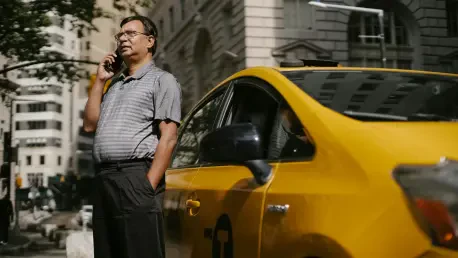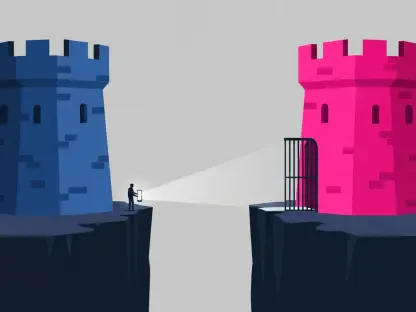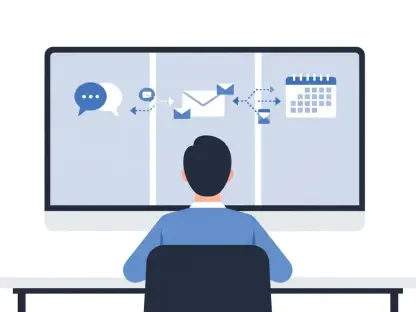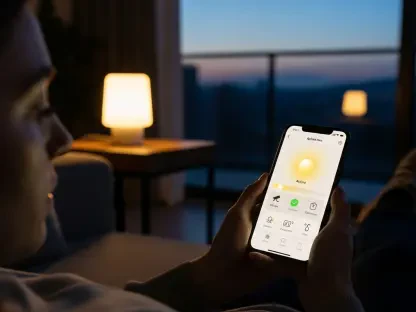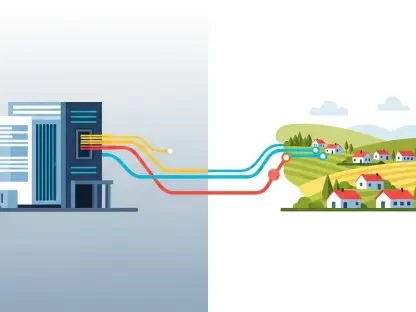In a city as vast and diverse as New York, access to reliable internet remains a critical lifeline for countless residents, yet thousands still grapple with the digital divide that separates them from essential online resources. The recent extension of the Big Apple Connect program through June 2028 marks a pivotal moment in addressing this disparity, particularly for low-income households in public housing. Launched under Mayor Eric Adams, this initiative provides free broadband and cable services to residents of the New York City Housing Authority (NYCHA), impacting approximately 330,000 individuals across 220 sites. Recognized as the largest municipally subsidized broadband effort in the nation, the program’s continuation ensures that these communities can stay connected to education, job opportunities, and vital services without the looming threat of service disruptions. This decision not only underscores the city’s dedication to digital equity but also sets the stage for a deeper exploration of the challenges and controversies surrounding such ambitious connectivity efforts.
Advancing Digital Equity in Urban Communities
The Big Apple Connect program stands as a flagship initiative in New York City’s mission to close the digital divide, especially for those residing in public housing. Initially introduced at 100 NYCHA locations, it has since expanded to cover 150,000 households across 220 sites, backed by an annual city investment exceeding $38 million. This extension for another three years highlights a firm recognition that internet access is no longer a luxury but a fundamental necessity, comparable to basic utilities like water and power. Connectivity empowers residents to pursue education, secure employment, and access critical services, fostering greater socioeconomic mobility. The sheer scale of this program, both in terms of reach and funding, positions it as a bold model for other urban centers grappling with similar inequities, demonstrating how targeted municipal action can transform lives by ensuring that no one is left offline in an increasingly digital world.
Beyond its immediate impact, the program’s extension through 2028 offers a sense of stability for NYCHA residents who rely on these services daily. The fear of sudden disconnection—a reality for many low-income households facing financial constraints—is alleviated, allowing families to plan and thrive without the constant worry of losing access to online tools. Moreover, this sustained commitment sends a powerful message about prioritizing digital inclusion as a public good, even amidst competing budgetary demands. While the initiative has already made significant strides, it also brings to light the persistent systemic barriers that prevent universal access, such as affordability and infrastructure limitations in densely populated urban areas. Addressing these challenges requires not just temporary subsidies but a long-term vision for integrating connectivity into the fabric of city planning, ensuring that every resident, regardless of income, can participate fully in the digital economy.
Collaboration with Private Internet Providers
A key pillar of Big Apple Connect’s operational framework is its partnership with prominent internet service providers, Spectrum (Charter) and Optimum (Altice USA). These companies play a crucial role in delivering subsidized broadband and cable services to NYCHA residents, ensuring that the technical infrastructure meets the demands of a large and diverse user base. Additionally, their combined pledge of $1.2 million toward digital literacy programs amplifies the program’s impact by equipping participants with essential online skills. Through virtual training sessions and resources available at local libraries, residents gain the knowledge needed to navigate digital platforms effectively, from job applications to remote learning tools. This public-private collaboration exemplifies a pragmatic approach to addressing connectivity gaps, leveraging corporate expertise and resources to complement municipal funding and oversight.
However, while these partnerships facilitate scalability and service delivery, they also raise questions about dependency on private entities for public goods. The involvement of Spectrum and Optimum ensures efficiency but introduces complexities regarding accountability and long-term sustainability. Should these providers alter their commitments or face financial pressures, the burden could shift back to the city, potentially disrupting services for thousands. Furthermore, the focus on digital literacy is a vital but often underemphasized component, as access alone does not guarantee effective use of technology. By investing in training, the program acknowledges that true digital equity extends beyond mere connectivity to include the skills necessary for meaningful engagement. As this model evolves, striking a balance between private contributions and public control will be essential to safeguard the interests of the most vulnerable communities it serves.
Navigating Privacy and Surveillance Concerns
Despite the program’s successes, Big Apple Connect has not escaped scrutiny, particularly over privacy issues that have sparked significant public concern. Reports have surfaced indicating that the Adams administration considered using the program’s infrastructure to enhance the New York Police Department’s (NYPD) surveillance capabilities by connecting public housing cameras to the NYPD’s Domain Awareness System. This potential integration, which came to light without prior notification to residents, has ignited a firestorm of criticism from lawmakers and community advocates who argue that such measures infringe on personal privacy. The lack of transparency surrounding these plans has eroded trust, raising ethical questions about balancing technological advancements with the fundamental rights of individuals in underserved communities.
Adding to the controversy, the timing of the extension announcement—made just a day before a scheduled City Council oversight hearing—has been perceived as an attempt to avoid rigorous public scrutiny. This move has intensified calls for greater accountability and clearer communication with those directly affected by the program. For many NYCHA residents, the promise of free internet is overshadowed by the fear that their personal data or activities could be monitored without consent. This situation underscores a broader tension between public safety objectives and individual privacy, a debate that extends far beyond New York City’s borders. Resolving these concerns will require robust policies that prioritize resident input and ensure that connectivity initiatives do not come at the cost of personal freedoms, setting a precedent for how urban digital programs are implemented nationwide.
Addressing the Broader Affordability Challenge
The extension of Big Apple Connect also casts a spotlight on the larger issue of broadband affordability, a persistent hurdle for low-income households in urban settings. According to a Federal Reserve Bank of New York report, these households allocate 2.43% of their income to internet services, surpassing the Federal Communications Commission’s affordability threshold of 2%. This disproportionate financial burden restricts access to essential online resources, often forcing families to rely solely on mobile devices, which can be inadequate for tasks like remote work or education. While programs like Big Apple Connect provide relief for some, they do not fully address the systemic inequities that leave many struggling to afford consistent, high-quality connectivity in an era where digital access is indispensable.
Moreover, the affordability gap exacerbates existing social disparities, limiting opportunities for economic advancement and perpetuating cycles of poverty. For instance, households without reliable broadband are often cut off from telehealth services, online job portals, and educational platforms, all of which are critical for improving quality of life. The city’s investment in subsidized services is a step forward, but it must be paired with broader policy interventions to tackle the root causes of this digital divide. Initiatives that target pricing structures, expand public Wi-Fi networks, or offer income-based discounts could complement existing efforts. As urban areas continue to grapple with these challenges, the lessons learned from Big Apple Connect’s implementation could inform national strategies to ensure that affordability does not remain the final barrier to universal internet access for all citizens.
Future Pathways for Connectivity Solutions
Looking ahead, New York City is exploring alternative approaches to bridge the digital divide, with the forthcoming Liberty Link program representing a shift toward public infrastructure. This initiative focuses on constructing a city-operated fiber network to serve affordable housing in the Bronx and Manhattan, targeting nearly 2,200 households across 35 buildings in its initial phase. Unlike Big Apple Connect’s reliance on private ISPs, Liberty Link emphasizes municipal control over connectivity, potentially offering greater autonomy and customization to meet community needs. While still in early stages, with a small proof-of-concept rollout expected soon, this program could pave the way for scalable solutions that prioritize public ownership over corporate partnerships in addressing digital inequity.
Yet, the future of such initiatives remains uncertain, especially with Mayor Adams’ recent decision to step away from re-election. A change in leadership could bring shifts in policy priorities, affecting the trajectory of both Big Apple Connect and Liberty Link. Will the next administration double down on public infrastructure, maintain existing private collaborations, or introduce entirely new frameworks for digital access? These questions loom large as the city navigates the complex landscape of digital equity. Additionally, the success of alternative models like Liberty Link will depend on their ability to scale effectively while maintaining affordability and quality of service. As these programs unfold, their outcomes will likely influence broader discussions on how best to ensure that every resident, regardless of socioeconomic status, can thrive in a connected world.
Reflecting on Progress and Next Steps
Looking back, the extension of Big Apple Connect through 2028 proved to be a defining moment in New York City’s ongoing battle against the digital divide, securing vital connectivity for over 330,000 public housing residents. The initiative, despite its controversies around privacy and transparency, delivered tangible benefits by keeping thousands online for education, work, and essential services. However, the broader affordability crisis and ethical dilemmas tied to surveillance cast a shadow over its achievements, reminding policymakers that access alone is not enough without trust and equity at the core of such efforts.
Moving forward, the city faces critical decisions about balancing technological innovation with resident rights, ensuring that future programs prioritize transparency and community input. Exploring diverse solutions like Liberty Link offers hope for more sustainable, publicly driven models, while the lessons from Big Apple Connect could guide national efforts to close digital gaps. As political transitions loom, maintaining momentum on these initiatives becomes paramount to guarantee that connectivity remains a universal right, not a privilege, for all New Yorkers.
